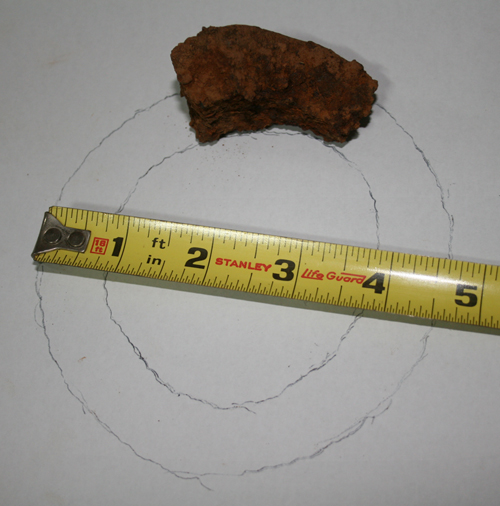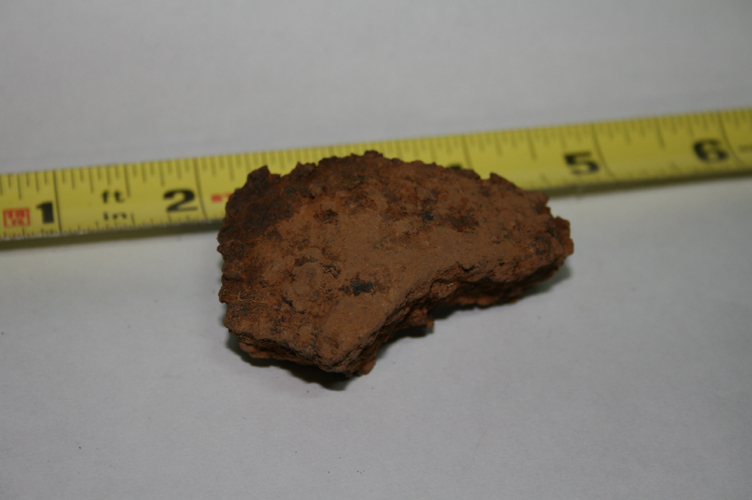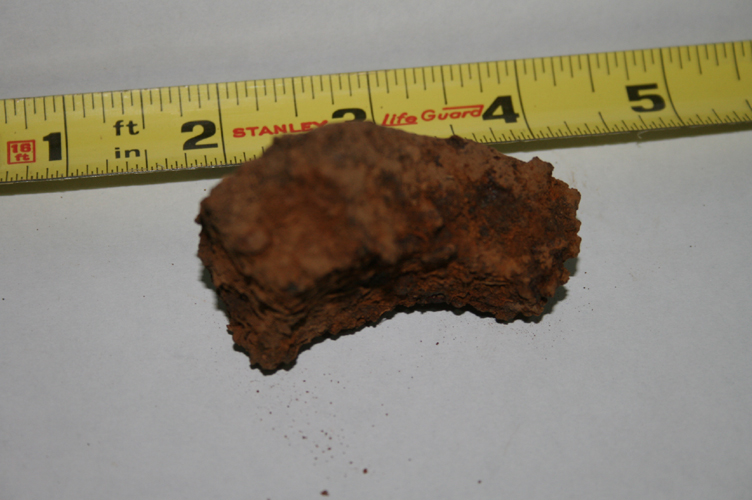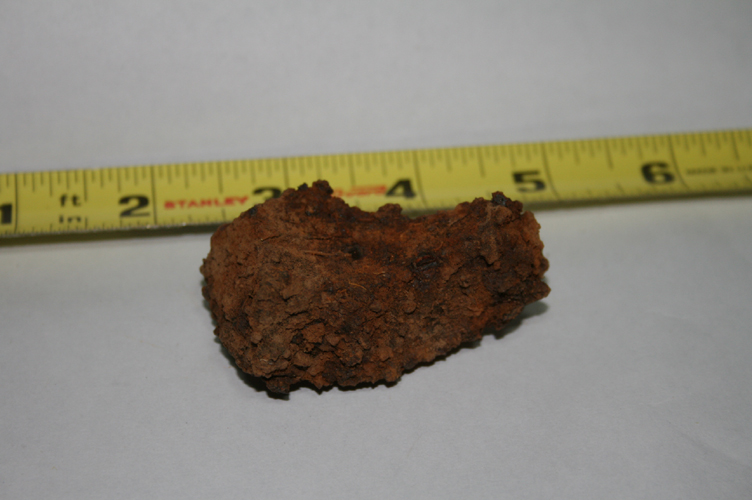I have been doing research on the 1871 U.S. military action in Korea for the past fifteen years. About ten years ago, I followed the U.S. "Line of March" on the island of Ganghwado for the first time; this past weekend, I did it again. I needed to collect evidence of the U.S. presence, as many of the spots along the LOM are being destroyed by development (one place where the U.S. had placed artillery now has a factory on it). To that end, I, along with three others (a Korean prof, another American and a Canadian) followed the LOM with metal detectors in hand. We found several items along the way, including this fragment from a 12-pdr. shell.
In the officer's reports, here is what was written on it:
The pictured fragment is from that attempt to hit the Koreans, but were "unable to reach". My questions would be what range the rifled howitzer had and how much of a spread of fragments would be expected? Approximately how many fragments would a 12-pdr. break up into? From the weight of the one I have (about 1/3 pound), I estimated maybe about 27 pieces--would that be close? In the first picture, I used the fragment to trace the outline of the shell.




http://www.shinmiyangyo.org
In the officer's reports, here is what was written on it:
One main body in the meantime marched to the top of a high hill ahead of us, and on reaching its summit observed the Coreans in considerable force on a very high and fortified ridge out of long rifle range; finding our rifled howitzers unable to reach, and the paths appearing to lead away too far from the river, we retraced our steps and got upon a ridge nearer and parallel to the river, and proceeded on toward the last fort, which was the main object of the expedition.
The pictured fragment is from that attempt to hit the Koreans, but were "unable to reach". My questions would be what range the rifled howitzer had and how much of a spread of fragments would be expected? Approximately how many fragments would a 12-pdr. break up into? From the weight of the one I have (about 1/3 pound), I estimated maybe about 27 pieces--would that be close? In the first picture, I used the fragment to trace the outline of the shell.




http://www.shinmiyangyo.org

